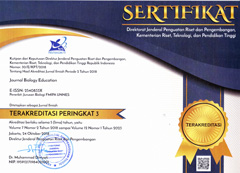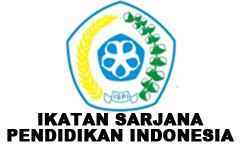Development of E-Module Materials on Plants Structure and Tissue Function Based on Discovery Learning for High School Students
Abstract
The use of printed teaching materials in schools is less attractive to students and students' interest and motivation to learn is relatively below average, hence, the basic competencies set have not been achieved. Advances in science and technology can be used to procure more varied teaching materials such as E-modules. The purpose of this study is to analyze the feasibility, practicality and effectiveness of E-modules in the learning process. The research design used is development (R&D) using the ADDIE model with the stages of analysis, design, development, implementation, and evaluation. Eligibility of the E-module is determined based on the validation of material experts and media experts. The practicality of the E-module is determined based on student responses and teacher responses. The effectiveness of the E-module is determined based on the interest and motivation of students to learn. The results showed that the material expert validation value was 87% (very feasible) and the media expert validation value was 93% (very feasible). The results of the practicality of the E-module are that the teacher thinks it is very practical, on the small scale test all students think it is practical, on the large scale test 49% of students think it is very practical and 51% of students think it is practical. The results of the effectiveness of the e-module on a small scale test are 40% of students think it is very effective and 60% of students think it is effective, on a large scale test 66% of students think it is very effective and 34% of students think it is effective. Conclusion, E-module structure and function of plant tissue based on discovery learning is feasible, practical, and effective to be used as a learning medium.
The copyright of the article once it is accepted for publication shall be assigned to the journal as the publisher. The intended copyright includes the right to publish the article in various forms (including reprints). The journal maintains the publishing rights to the published articles.
This work is licensed under a Creative Commons Attribution 4.0 International License.







